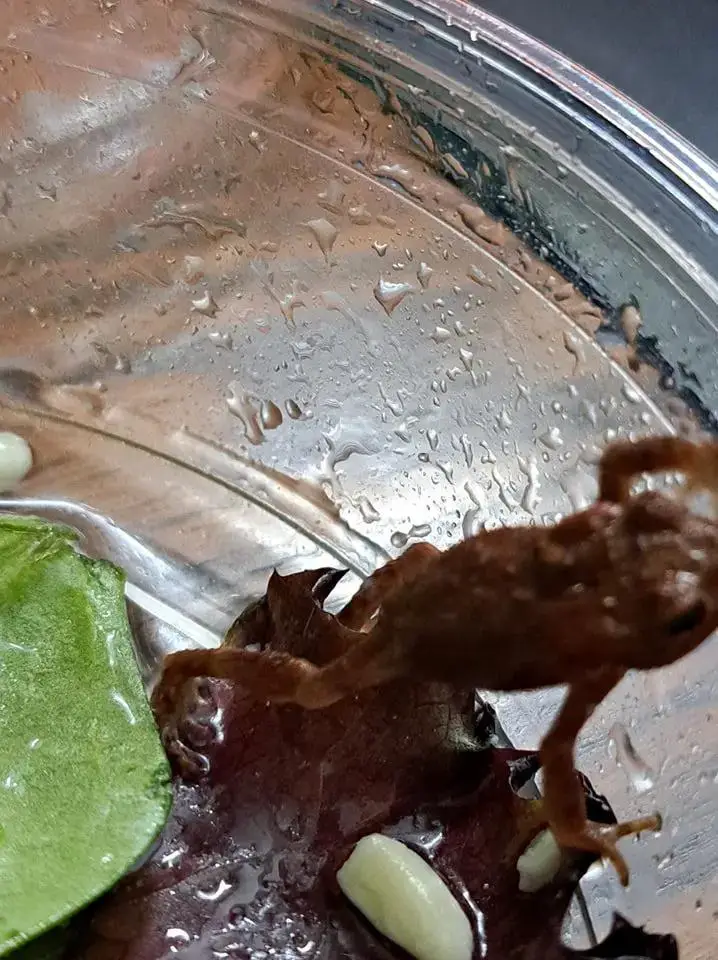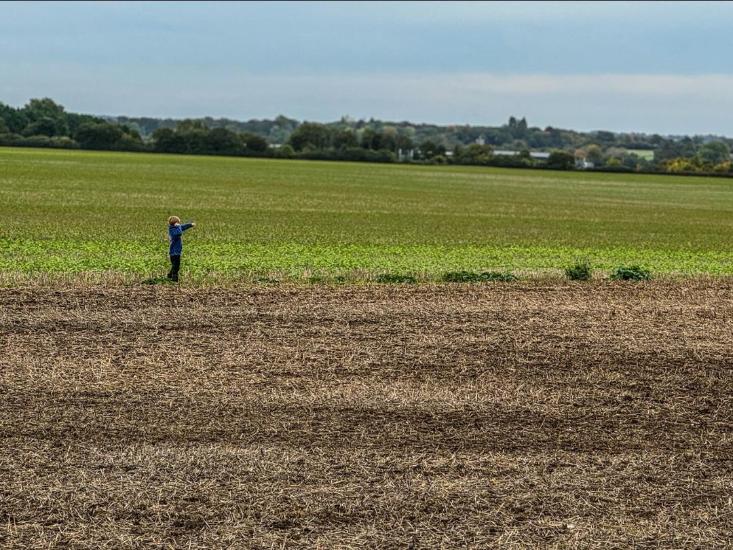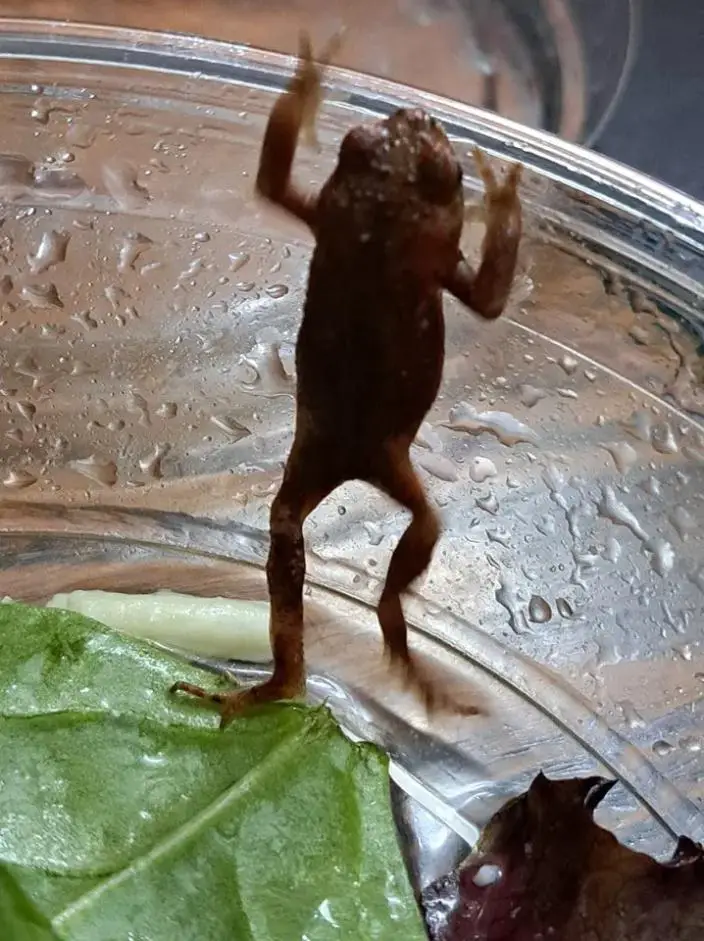From artisanal crepes to rebellious cheesecake waffles, Reading's breakfast rebels are transforming morning meals. These seven spots will revolutionize how you start your day.
Unexpected Visitor: Toad Discovered in Waitrose Salad Bag
In a bizarre twist that's sure to make shoppers think twice before reaching for their greens, animal experts are currently investigating the mysterious appearance of a toad in a bag of salad purchased from Waitrose. This unusual incident has left both customers and wildlife specialists puzzled, as they attempt to unravel the amphibian's origins.
From Farm to Table: An Unexpected Journey
The discovery of the small creature among the leafy greens has raised questions about food safety protocols and the journey our produce takes from field to supermarket shelf. As experts work to identify the toad's species and potential point of origin, this peculiar event serves as a reminder of the complex supply chains behind our everyday groceries.
A Surprising Discovery

The tranquil world of grocery shopping was recently shaken when a customer made an unexpected discovery in their bag of Waitrose salad - a live toad nestled among the greens. This unusual incident has sparked confusion and concern among shoppers and animal experts alike, as they grapple with the mystery of how the amphibian found its way into the packaged produce.
The presence of the toad in a sealed salad bag raises significant questions about food safety protocols and the journey our fresh produce takes from farm to table. As consumers, we often take for granted the complex supply chains that bring food to our local supermarkets, but this incident serves as a stark reminder of the potential gaps in these processes.
Expert Investigation Underway
In response to this peculiar event, animal experts have been called in to investigate the origins of the toad. Their primary focus is on identifying the species of the amphibian, which could provide crucial clues about its native habitat and how it may have ended up in the salad bag.
The investigation is likely to involve a thorough examination of Waitrose's supply chain, tracing the journey of the salad from the fields where it was grown to the packaging facility and finally to the supermarket shelf. This process may uncover valuable insights into potential weaknesses in the current system that allowed a live animal to slip through unnoticed.
Implications for Food Safety
While the discovery of a toad in a salad bag may seem like an isolated incident, it highlights broader concerns about food safety and quality control in the produce industry. Consumers rely on supermarkets and their suppliers to maintain strict standards of hygiene and safety, and incidents like this can erode public trust.
The presence of a live animal in packaged food also raises questions about the potential for contamination and the spread of harmful bacteria or parasites. As the investigation unfolds, it's likely that both Waitrose and regulatory bodies will be reviewing and potentially revising their quality control measures to prevent similar occurrences in the future.
Consumer Response and Supermarket Action
News of the toad discovery has undoubtedly left many shoppers feeling uneasy about the safety and cleanliness of their produce. Waitrose, known for its commitment to quality, will need to address these concerns promptly and transparently to maintain customer confidence.
While the supermarket has not yet released an official statement on the incident, it's expected that they will cooperate fully with the ongoing investigation and take swift action to reassure customers of their commitment to food safety. This may include implementing additional checks in their supply chain, reviewing their supplier relationships, or enhancing their quality control processes.
As this unusual story continues to unfold, it serves as a reminder of the complexities involved in our modern food supply systems and the ongoing need for vigilance in maintaining food safety standards.
Lessons for the Industry
This unusual incident serves as a wake-up call for the entire food industry, highlighting the need for continuous improvement in quality control processes. While isolated, such events can prompt a broader examination of current practices across the supply chain. Supermarkets and suppliers may need to reassess their protocols, potentially implementing more stringent checks at various stages of production and packaging.
The discovery also underscores the importance of traceability in the food supply chain. Being able to quickly identify the source of the toad and the path it took to reach the consumer's shopping bag is crucial for preventing future occurrences and maintaining public trust.
Environmental Considerations

Beyond food safety concerns, this incident raises questions about the impact of large-scale agriculture on local ecosystems. The presence of a toad in a salad bag suggests a potential overlap between agricultural areas and amphibian habitats. This could spark discussions about sustainable farming practices and the need to balance food production with wildlife conservation.
Environmentalists may use this opportunity to advocate for more eco-friendly farming methods that preserve biodiversity while ensuring food safety. The incident could lead to increased collaboration between farmers, wildlife experts, and food safety specialists to develop solutions that protect both consumers and local ecosystems.
A Catalyst for Change
While undoubtedly alarming for the customer involved, this unusual discovery could ultimately lead to positive changes in the food industry. It may prompt a reevaluation of current practices, encouraging innovation in packaging, transportation, and quality control methods.
Moreover, this incident serves as a reminder of the connection between our food and the natural world. It may inspire consumers to become more engaged with the origins of their produce, potentially driving demand for greater transparency in food sourcing and production methods.
As the investigation concludes and measures are put in place to prevent similar occurrences, this peculiar event may be remembered as a turning point in the ongoing dialogue about food safety, environmental responsibility, and the complex journey our food takes from field to fork.
